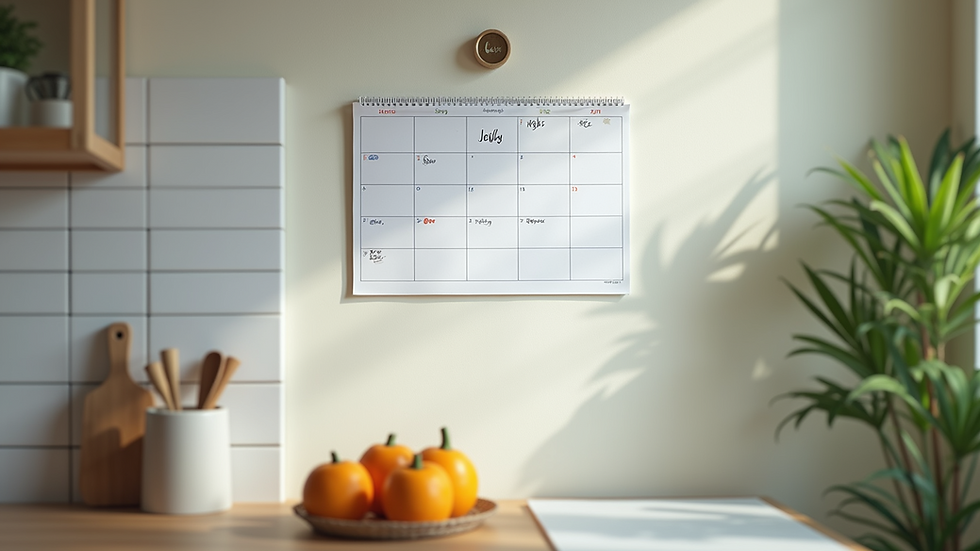Effective Strategies for Successful Co-Parenting
- Cassidy Bryant

- Sep 19
- 4 min read
Navigating life after separation or divorce can be challenging, especially when children are involved. The goal is always to create a stable, loving environment for your children, even if you and your co-parent no longer live together. I have found that adopting effective co-parenting solutions can make this journey smoother and more positive for everyone involved. It is about working together respectfully and thoughtfully, focusing on the well-being of your children above all else.
Understanding Co-Parenting Solutions
Co-parenting solutions are practical ways to manage parenting responsibilities after separation. They help parents communicate better, share duties fairly, and support their children’s emotional needs. These solutions are not about winning or losing but about cooperation and respect.
One key to successful co-parenting is clear communication. This means being honest, calm, and consistent when discussing your children’s needs. For example, setting up regular check-ins via phone or email can keep both parents informed about school events, health appointments, or changes in routine.
Another important aspect is flexibility. Life is unpredictable, and sometimes plans need to change. Being willing to adjust schedules or swap days shows your child that both parents are committed to their happiness and stability.
Finally, setting boundaries is crucial. Agreeing on rules and expectations helps avoid conflicts. For instance, deciding together on bedtime routines or screen time limits ensures your child experiences consistency, no matter which home they are in.

Practical Co-Parenting Solutions to Try Today
Implementing co-parenting solutions can feel overwhelming at first, but starting with small, manageable steps can build a strong foundation.
Create a Parenting Plan
A detailed parenting plan outlines who is responsible for what and when. It covers holidays, school events, and daily routines. This plan acts as a roadmap, reducing misunderstandings and stress.
Use Technology to Stay Connected
Apps designed for co-parents can help track schedules, share important information, and communicate without conflict. These tools keep everything organised and accessible.
Attend Important Events Together When Possible
Showing up together for your child’s milestones, like sports games or recitals, sends a powerful message of unity and support.
Respect Each Other’s Parenting Styles
While you may have different approaches, respecting your co-parent’s methods helps maintain peace. Focus on what works best for your child rather than trying to control every detail.
Prioritise Your Child’s Emotional Health
Encourage your child to express their feelings and reassure them that both parents love them. Avoid speaking negatively about the other parent in front of your child.
By applying these solutions, you create a nurturing environment that supports your child’s growth and happiness.

What is the 7 7 7 Rule Parenting?
The 7 7 7 rule is a simple guideline to help parents manage their time and attention between two households. It suggests that children spend 7 days with one parent, then 7 days with the other, and 7 days shared or flexible time. This rhythm can provide stability and predictability for children, reducing anxiety about transitions.
This rule is especially helpful when parents live far apart or have demanding work schedules. It allows children to settle into each home without feeling rushed or unsettled. The 7 7 7 rule also encourages parents to plan activities and routines that fit the week-long cycle, making it easier to maintain consistency.
Of course, this rule is not one-size-fits-all. Some families may need to adjust the timing to suit their unique circumstances. The key is to communicate openly and agree on a schedule that prioritises the child’s comfort and needs.

Building a Positive Co-Parenting Relationship
A positive co-parenting relationship is built on trust, respect, and shared goals. It takes effort but pays off in a happier family dynamic.
Focus on the Child
Always bring conversations back to what is best for your child. This focus helps keep emotions in check and decisions clear.
Practice Patience and Empathy
Understand that your co-parent is also adjusting to changes. Showing empathy can ease tensions and foster cooperation.
Seek Support When Needed
Sometimes, professional help from a mediator or counsellor can guide you through difficult conversations. Don’t hesitate to ask for support to keep things on track.
Celebrate Small Wins
Acknowledge when things go well, whether it’s a smooth handover or a successful event attended together. Positive reinforcement encourages continued cooperation.
By nurturing your co-parenting relationship, you create a stable foundation for your children’s future.
Moving Forward with Confidence
Co-parenting is a journey, not a destination. It requires ongoing effort, communication, and kindness. Remember, your children benefit most when both parents work together peacefully and confidently.
If you are looking for more guidance, I recommend exploring co-parenting strategies. These resources offer practical advice and support tailored to families navigating separation.
By embracing effective co-parenting solutions, you can reduce stress, avoid costly court battles, and most importantly, provide your children with the loving environment they deserve. Take it one step at a time, stay focused on your child’s well-being, and trust that you are making a positive difference.
Your commitment to peaceful co-parenting is a gift to your family’s future.



Comments